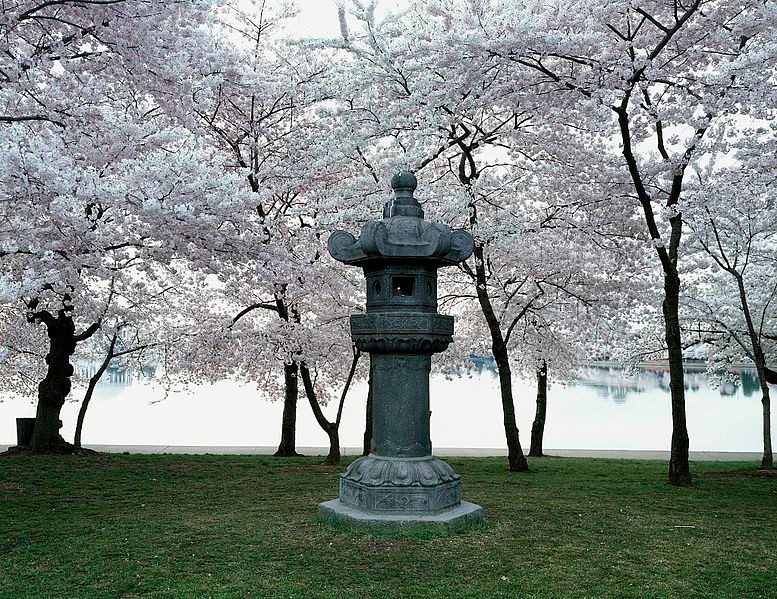Japanese Stone Lantern, Tidal Basin
Introduction
Text-to-speech Audio
Images
Japanese Stone Lantern by Carol M. Highsmith, courtesy of Library of Congress via Wikimedia Commons (no known copyright restrictions)

Backstory and Context
Text-to-speech Audio
First Lady Helen Herron Taft and Viscountess Iwa Chinda, wife of the Japanese ambassador, planted the trees on March 27, 1912. These two Yoshino cherry trees were the first of over 3,000 given to the United States by the city of Tokyo. The trees began to bloom four years later, filling the U.S. capital with sakura, or cherry blossoms.
In 1921, Japan offered the United States this lantern to complement its earlier gift. The lantern dates from the 17th century and weighs over 20 tons, and stood next to an identical lantern in Tokyo's Ueno Park. The lantern did not make the trip, however, as relations between the U.S. and Japan slowly deteriorated during the 1920s and 1930s. As Japan became more aggressive and expansionistic, the United States made the decision to halt trade of military items and eventually ceased trade of aviation fuel and other supplies. The decline of trade was a factor that led to Japan's decision to attack Pearl Harbor in hopes of crippling the American fleet. The main reason for the attack was Japan's ambition to take control over Southeast Asia at a time when the United States Navy was the only force capable of stopping these plans as the leading colonial powers of Europe were embroiled in a war for their survival and France had already surrendered much of their sovereignty over to Hitler. The attack on the United States led to a brutal era of total war between the two nations culminating with the firebombing of Japanese cities and the nuclear bombing of Hiroshima and Nagasaki.
After World War II, relations between the two nations healed remarkably quickly when considering the violence of the war years. In the early 1950s, Japanese ambassador Sadao Iguchi again offered the lantern to the city of Washington, and it was dedicated in this spot on March 30, 1954. The lantern was an important symbol of the return to peaceful relations between the two countries. On the opposite side of the tidal basin is a Japanese pagoda which also honors the event.
A part of the Cherry Blossom festival every year, the National Park Service and National Council of State Societies light the lantern. The Embassy of Japan appoints a Cherry Blossom princess and the city welcomes the arrival of spring.
Sources
Bruton, J. Makali. A Symbol of International Friendship, Historical Marker Database. June 5th 2020. Accessed December 20th 2020. https://www.hmdb.org/m.asp?m=93423.
Miller, Richard E. Lighting the Way, Historical Marker Database. June 5th 2020. Accessed December 20th 2020. https://www.hmdb.org/m.asp?m=29559.
https://commons.wikimedia.org/wiki/File:The_Japanese_Lantern_is_a_stone_statue_in_West_Potomac_Park_15631v.jpg
